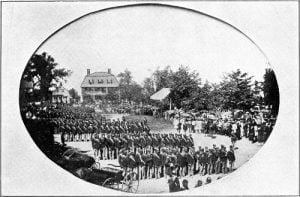The Second Connecticut Heavy Artillery
It was in November, 1863, that the War Department orders were issued changing the Nineteenth Infantry to a regiment of heavy artillery, which Governor Buckingham denominated the Second Connecticut. Artillery drill had for some time been part of its work, and the general efficiency and good record of the regiment in all particulars was responsible for the change, which was a welcome one, as the artillery was considered a very desirable branch of the service, and the increase in size gave prospects of speedier promotions. Recruiting had been necessary almost all the time to keep the regiment up to the … Read more







